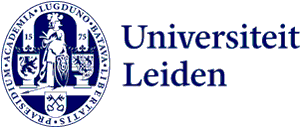915 search results for “celik chemistry” in the Public website
-
 Daniel Çelik
Daniel ÇelikICT Shared Service Centre
-
 Feyza Çelik
Feyza ÇelikFaculty of Humanities
-
 Saniye Çelik
Saniye ÇelikFaculty Governance and Global Affairs
-
Chemistry
Are you thinking about studying Chemistry? Learn more and watch the videos.
-
Chemistry
PhD candidates carry out a programme of independent research and additional (limited) course work, culminating in production of a PhD thesis in typically 4 years.
-
Chemistry (MSc)
As a student in the MSc Chemistry programme offered by the Leiden Institute of Chemistry (LIC) you will focus your studies on one of the two main research areas of the LIC. Students in the research area Chemical Biology will study fundamental biological and biomedical problems to understand physiological…
-
Medicinal Chemistry
The mission in this division, headed by Laura Heitman, is to design and synthesize novel and better ligands for drug targets. Drug discovery is a lengthy but inspiring adventure. It is often an interplay between academic institutes and pharmaceutical industry, in which scientists at university develop…
-
Theoretical Chemistry
The main goal of the THEOR CHEM group, headed by Prof. Geert-Jan Kroes, is to characterize, and to accurately predict the outcome of chemical reactions at gas-solid and liquid-solid interfaces. Here the solid surface is typically a metal or an ice surface. These goals are important to many areas in…
-
Leiden Institute of Chemistry
The Leiden Institute of Chemistry (LIC) is the basis for research and collaborations of the Leiden chemistry groups. Chemistry is the central science enabling a healthy future in a sustainable society. Chemistry researchers at Leiden University take a fundamental approach in finding tailored solutions…
-
Get to know Chemistry
The master's programme in Chemistry offers you access to cutting-edge research. This research is concentrated in two areas: Chemical Biology and Energy & Sustainability. Students in the research area Chemical Biology will study fundamental biological and biomedical problems to understand physiological…
-
Get to know Chemistry
The master's programme in Chemistry offers you access to cutting-edge research. This research is concentrated in two areas: Chemical Biology and Energy & Sustainability. Students in the research area Chemical Biology will study fundamental biological and biomedical problems to understand physiological…
-
Research schools in chemistry
The Leiden Institute of Chemistry actively participates in several national research schools for MSc and PhD students. These schools are consortia that stimulate collaboration between research groups of the different participating Dutch universities. The research schools also offer advanced training…
-
Sustainable Chemistry and Biotechnology
If mankind wants to survive into the 22nd century, we will need to change the way we live drastically. The human impact on our planet is everywhere, we are changing the atmosphere, the oceans and the land, leading to global warming, climate change, loss of biodiversity and pervasive pollution. There…
-
Peptide amphiphiles and their use in supramolecular chemistry
Promotor: J.G.E.M.Fraaije, Co-promotor: A. Kros
-
Leiden Institute of Chemistry
The chemical industry must continue to innovate for a more sustainable, healthier society. The reseachers from the Leiden Institute of Chemistry (LIC) contribute by applying their knowledge to themes such as sustainability, energy and health.
-
Biophysical Structural Chemistry
Research within our group revolves around the atomic structures of large bio-molecules and their complexes.
-
Supramolecular & Biomaterials Chemistry
The Supramolecular & Biomaterials Chemistry group comprises the PIs Alexander Kros, Roxanne Kieltyka, Gregory Schneider and Sander Wezenberg, and is active in the field of self-assembly of amphiphilic peptides and applying them in supramolecular chemistry.
-
Structure-reactivity relationships in glycosylation chemistry
In a typical glycosylation reaction, a donor is activated to form a (variety of) electrophilic species which can react with a nucleophilic acceptor, following a reaction mechanism having both SN1 and SN2 character.
-
Bioorthogonal chemistry to unveil antigen processing events
The research described in this thesis focused on the use of bioorthogonal antigens to investigate immunological processes in antigen presenting cells. Bioorthogonal antigens are antigenic proteins produced through recombinant expression in a methionine auxotrophic E. coli strain.
- Leiden Institute of Chemistry
-
Biophysical Organic Chemistry
The long term goal of the Biophysical Organic Chemistry/SSNMR group, headed by Prof. Huub de Groot, is to reach an understanding of structure, dynamics and functional mechanisms of membrane proteins and self-organized biological assemblies and to translate this knowledge into new concepts for nano-devices,…
-
Catalysis and Surface Chemistry
In the Catalysis and Surface Chemistry group, we investigate how catalysis works on the molecular level. The group is divided in six subgroups, focusing on different aspects of heterogeneous catalysis, homogeneous catalysis and electrocatalysis.
- Teaching Chemistry (MSc)
-
Scrum in secondary chemistry education
This thesis explored the question whether Scrum methodology might function as an appropriate scaffold to enhance students’ learning and to support teachers in context-based secondary chemistry education.
-
Supramolecular and Biomaterials Chemistry
Alexander Kros studies supramolecular systems in a biological environment. The unifying theme between the projects in my lab is specific molecular recognition, i.e. the intermolecular interaction between complementary molecules with high affinity and selectivity. Studying, imitating and dissecting processes…
-
Chemistry between stars and planets
In the large gas clouds between the stars, chemical reactions take place under extreme conditions, giving rise to both small molecules, such as water and common salt, as well as large complex molecules that can serve as the building blocks of life. This is known as astrochemistry and it is something…
-
Synthetic, Physical and Computational Chemistry of Propeller-shaped Polycyclic Aromatic Hydrocarbons
This thesis systematically studies the physicochemical properties of non-planar, propeller-shaped, polycyclic aromatic hydrocarbons. The synthesis of several so-called propellerenes is described on a gram scale, using optimized procedures aimed at using less hazardous reagents and reducing the amount…
-
Modulation of plant chemistry by rhizosphere bacteria
Plant-microbe interaction resulted in different physio/chemical responses by host plant and interacting rhizobacteria.
-
Unlocking the chemistry of the heavens
How are the building blocks of life formed?
-
demonstration experiments on the quality of the micro-macro thinking of chemistry students
Demonstration experiments are a potentially powerful instrument to improve the micro-macro thinking of students in secondary education. Therefore we want to design a practical and generative approach to assist teachers to develop lessons with a demonstration experiment.
-
Multiple star formation: chemistry, physics and coevality
Multiple stars, that is two or more stars composing a gravitationally bound system, are common in the universe.
-
Dark ice chemistry in interstellar clouds
This thesis is largely an experimental study on the formation of solid-state simple and complex organic molecules in the H2O-rich and CO-rich ice phases of dense interstellar clouds and dark cores.
-
Bioorthogonal Chemistry: Applications in Activity-Based Protein Profiling
The close interaction between organic chemi stry and biology goes back to the late 18th century, when the modern natural sciences began to take shape. After synthetic organic chemistry arose as a discipline, organic chemists almost immediately began to pursue the synthesis of naturally occurring compounds,…
-
A bioorthogonal chemistry approach to the study of biomolecules in their ultrastructural cellular context
In this thesis the combinatorial use of bioorthogonal labelling and Electron Microscopy (EM)-based imaging techniques is explored to enable observations of specific molecular targets in their ultrastructural context within the cell.
-
Chemistry & Chemical Biology approaches toward novel cyclic peptide antibiotics
Can cyclic peptides provide a new generation of antibiotics?
-
Breaking & Entering: PAH photodissociation and top-down chemistry
Laboratory, observation and modeling work on the dissociation of polycyclic aromatic hydrocarbons in interstellar environments and the formation of new molecular species through the fragmentation process.
-
Search and rescue: tackling antibiotic resistance with chemistry
With the rise of multi-drug resistant bacterial pathogens, the possibility of a post-antibiotic world is quickly becoming reality.
-
Analytical chemistry and biochemistry of glycosphingolipids: new developments and insights
Advanced mass spectrometry of glycosphingolipids takes the central stage in this thesis. Investigations focus on characterization of glycosphingolipid metabolism in health and disease with emphasis to the detection and accurate quantitation of known and so far unknown glycosphingolipids and closely…
-
Chemistry in embedded disks: setting the stage for planet formation
To address the fundamental questions of how life on Earth emerged and how common life may be in the Universe, it is crucial to know the chemical composition of the planet-forming material.
-
Oxidation catalysis on Pt and Au: complexity of simple chemistry
Promotor: J.W.M. Frenken Co-Promotores: I.M.N. Groot; L.B.F. Juurlink
-
Protoplanetary disk anatomy: examining the structure and chemistry of planetary birthplaces with simple molecules
This thesis examines the link between simple molecules and the underlying structure and chemistry within protoplanetary disks - the birthplaces of planets.
-
Non-equilibrium chemistry and cooling in simulations of galaxy formation
Promotor: J. Schaye
-
A document classifier for medicinal chemistry publications trained on the ChEMBL corpus
Source: J Cheminform, Volume 6, Issue 1 (2014)
-
 Lies Bouwman
Lies BouwmanScience
-
Bridging the gap between physics and chemistry in early stages of star formation
A dense region of a gaseous and dusty cloud collapses to form a protostar surrounded by a disk and an envelope. This thesis uses both observations and models to study physical and chemical conditions of these protostellar systems which are likely where planets start to form.
-
 Evani Lachmansingh
Evani LachmansinghScience
-
 Alexander Kros
Alexander KrosScience
-
 Marie-Jetta den Otter
Marie-Jetta den OtterICLON
-
 Willie Peijnenburg
Willie PeijnenburgScience
-
 Arjan de Koning
Arjan de KoningScience
